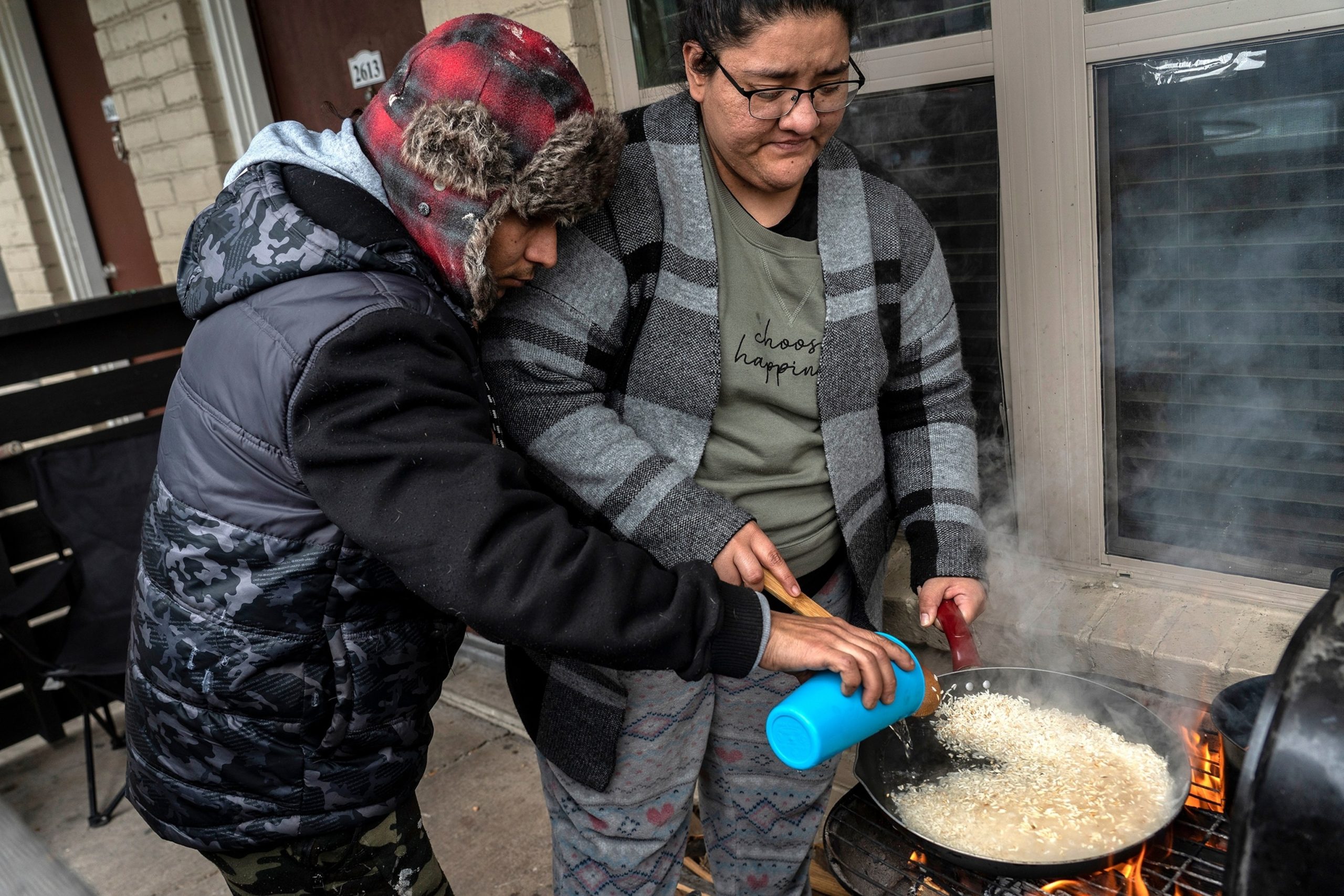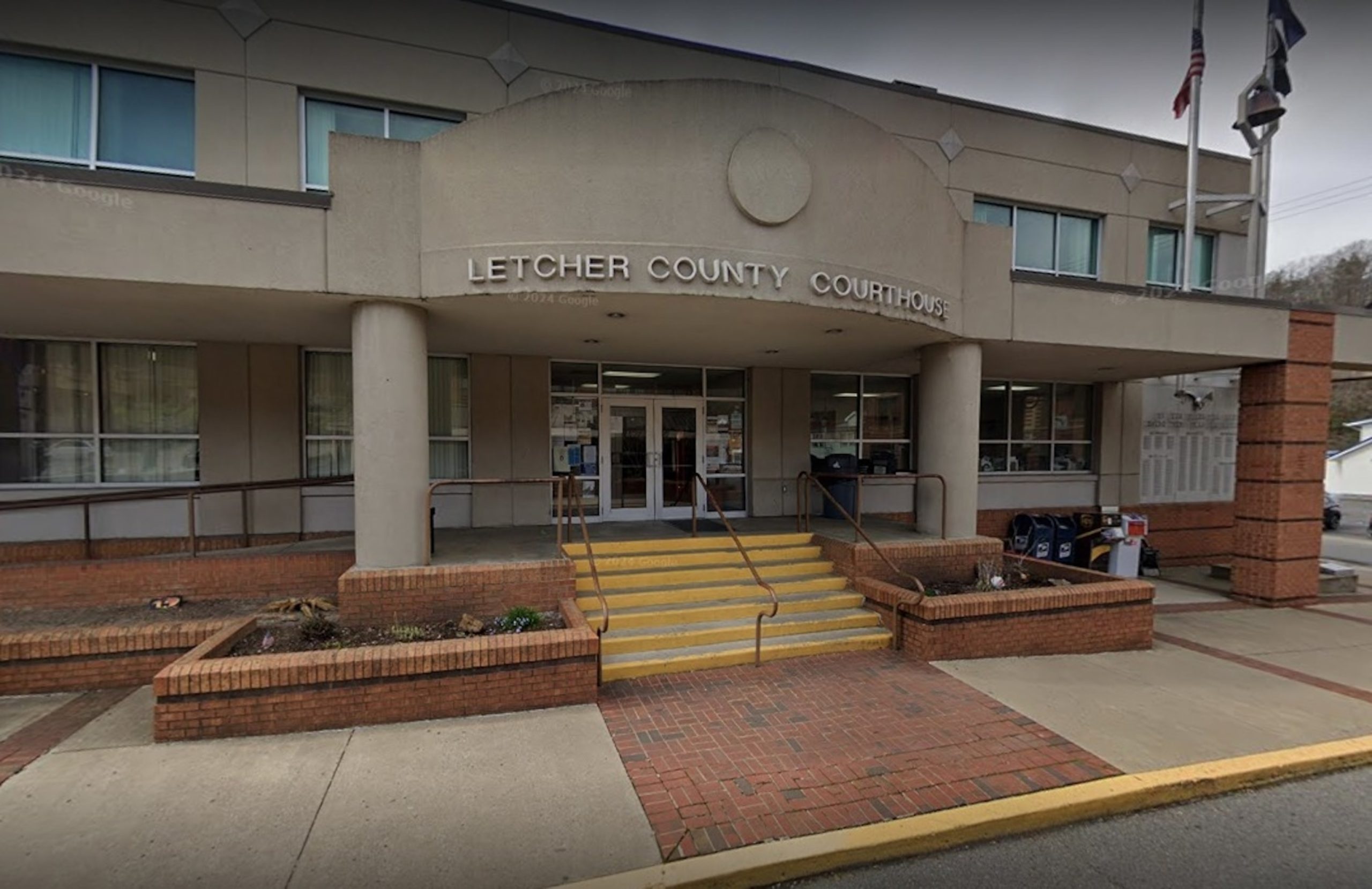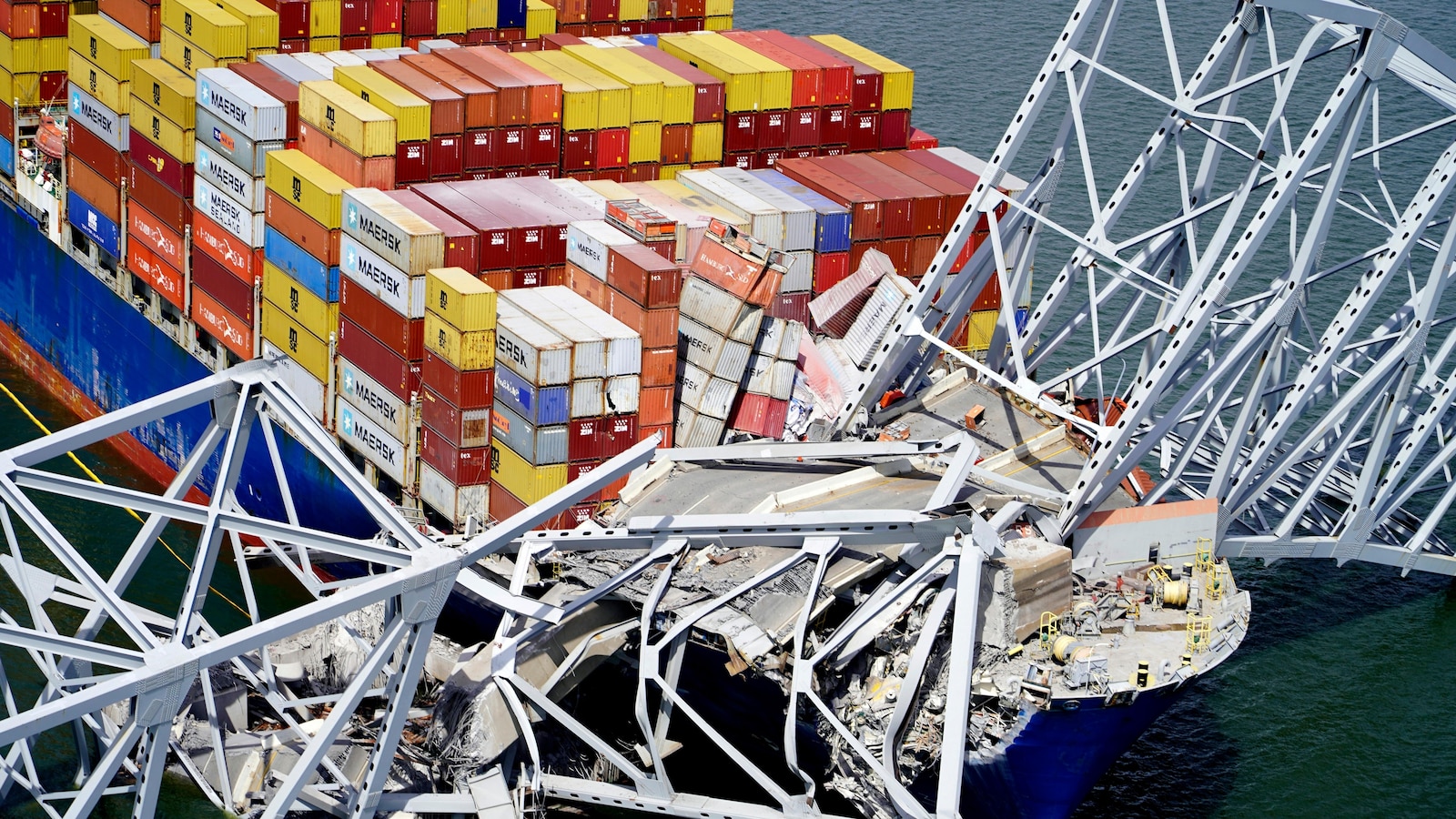Extreme weather is causing power grids across the country to fail — sometimes at massive scales — putting residents at increased health risk as scientists predict an uptick in frequency of severe weather events in the future.
The effects of global warming are worsening in every part of the United States, according to the Fifth National Climate Assessment, a breakdown of the latest in climate science coming from 14 different federal agencies, published in November.
“You can see the trend, and there’s an increased frequency of extreme events due to climate change,” Max Zhang, an engineering professor at Cornell University, told ABC News.
More extreme weather events are leading to more power outages, the data shows.
There were 16% more disruptions in 2022 than in 2013 for the average person in the U.S., The Associated Press reported, citing data from the Energy Information Administration.
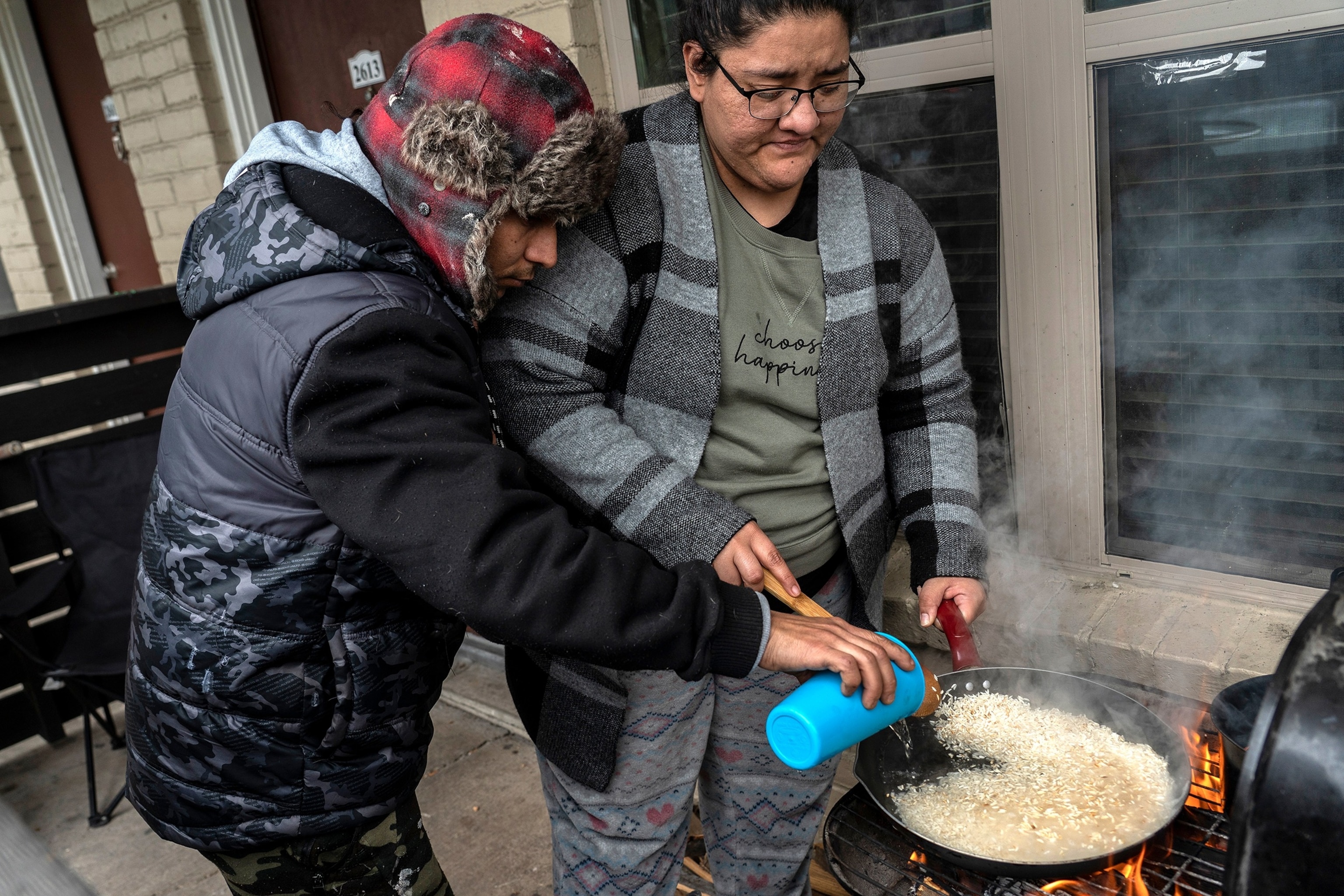
In this Feb. 16, 2021, file photo, people cook rice on a barbecue grill during power outage caused by the winter storm in Houston, Texas.
Go Nakamura/Getty Images, FILE
Of all major U.S. power outages reported from 2000 to 2023, 80% (1,755) were due to weather, according to a 2024 report by Climate Central, a nonprofit climate science news organization.
“The scale of the storm really can lead to the scale of the outage,” Mike Jacobs, senior energy analyst at the Union of Concerned Scientists, told ABC News.
When the power goes out, it’s not usually because the grid doesn’t have enough power, but rather there is trouble getting the power to the customers, Daniel Cohan, associate professor of environmental engineering at Rice University in Houston.
This is typically because the transmission lines and distribution lines are disrupted by a range of events, including strong storms, lightning strikes, extreme winds or even severe wildfires, Cohan said. Tornadoes, flooding and winter storms with ice and snow can also have an impact on the power lines, Zhang said.
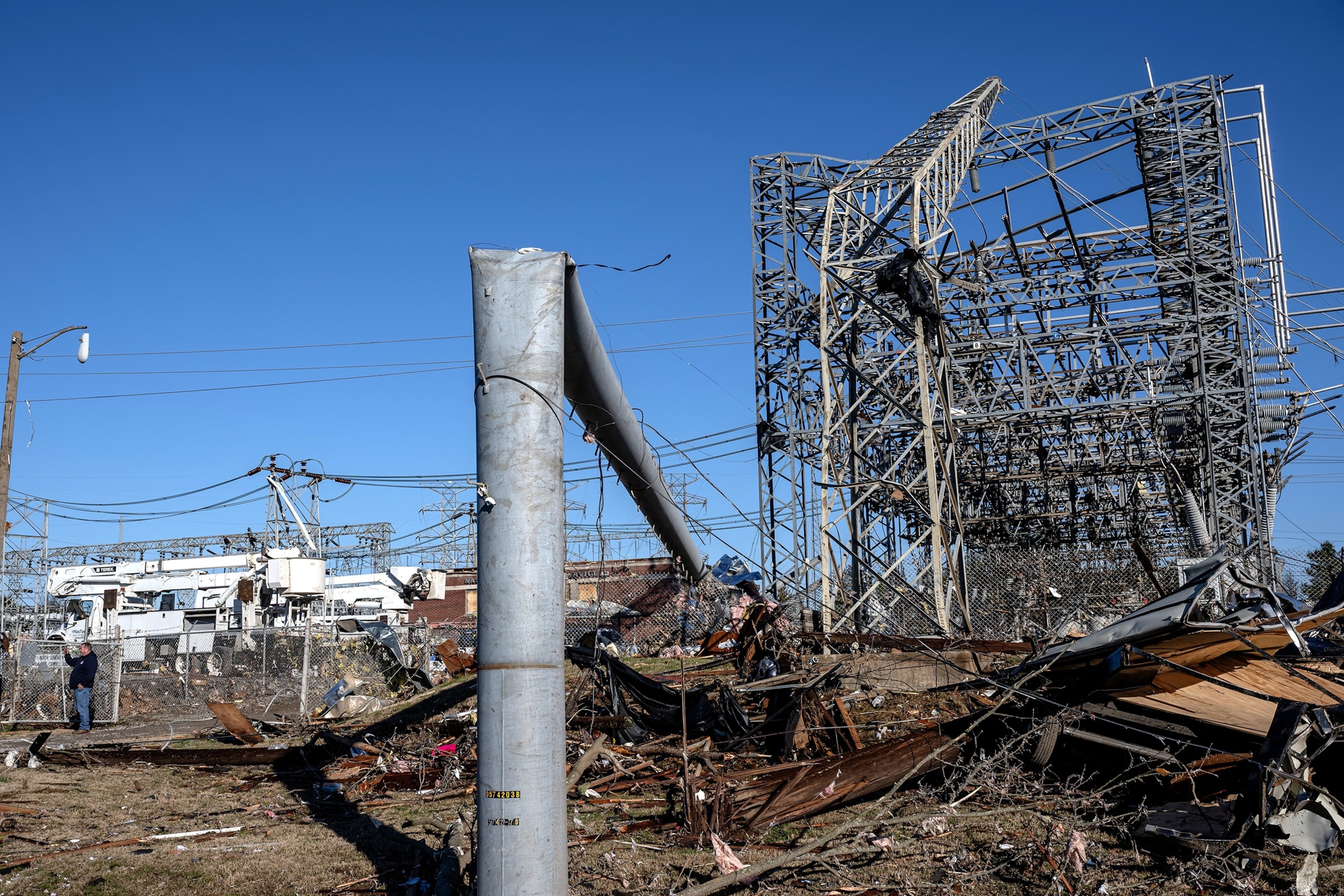
In this Dec. 10, 2023, file photo, a damaged electrical substation is seen in the aftermath of a tornado in Madison, Tenn.
Jon Cherry/Getty Images, FILE
One exception was during the 2021 Texas freeze, when power was knocked out to millions of homes in the state amid frigid temperatures. In that event, there actually wasn’t enough power to go around, especially after more than half of the state’s natural gas infrastructure experienced unplanned outages, a report by the Federal Energy Regulatory Commission released in November 2021 found.
Widespread outages at that scale are actually pretty rare, Cohan said, adding that blackouts tend to happen neighborhood by neighborhood.
Most weather-related outages between 2000 and 2023 were caused by severe weather (58%), winter storms (23%), and tropical cyclones including hurricanes (14%), the Climate Central report found.
While extreme heat is not a direct cause of power grid failures, extreme heat does cause power lines to operate less efficiently, Cohan said. In addition to the reduced efficiency, customers are often using more power to cool their homes. This is an example of a “compound hazard” — in which multiple threats to the power system happen at once — but they are low in probability, Zhang said.
Drought can also impact power grids, leaving less water available for cooling operations, especially at thermal plants that produce energy from coal, natural gas or nuclear power, Cohan said. Drought can also pave the way for raging wildfires that have the potential to take out power lines, Zhang said.
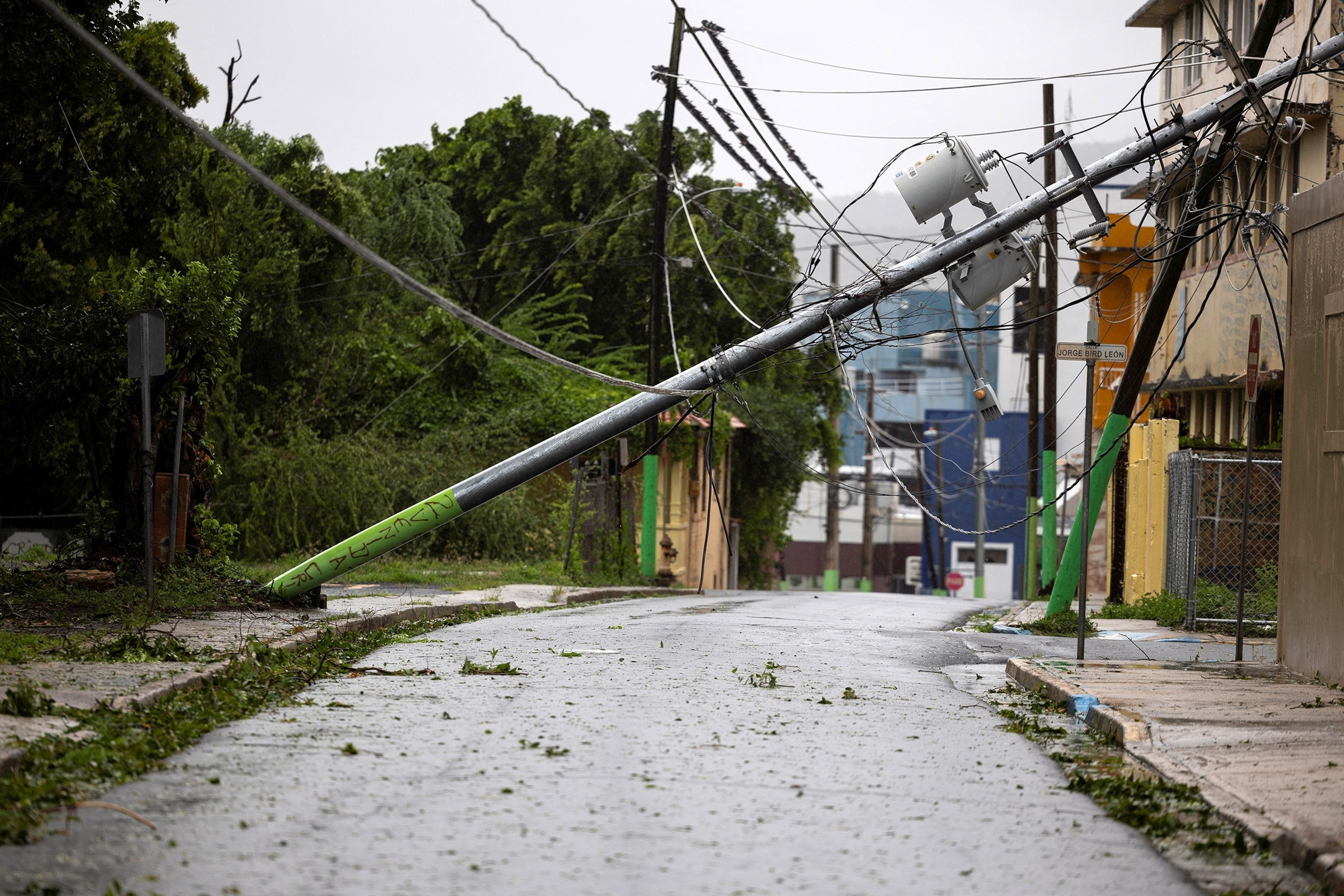
A power line pole leans against a house in the aftermath of Tropical Storm Ernesto, in Fajardo, Puerto Rico, on Aug. 14, 2024.
Ricardo Arduengo/Reuters
The longer the power is out, the more dangerous it is for human health — especially residents with underlying medical conditions, the experts said.
Hundreds of people died when the power went out during the 2021 Texas freeze, while heat is the No. 1 weather-related killer in the U.S., according to the Centers for Disease Control and Prevention.
The U.S. has been hit by two hurricanes so far this season — Hurricane Beryl in Texas in July and Hurricane Debbie in Florida at the beginning of August — it took “much longer” — nearly a week — for homes in Texas to regain power, Cohan said.
“I think that’s something that requires some exact examination after the fact is, why is it that Texas utilities … took so much longer than some of their Florida counterparts to get systems back online?” Cohan said.
The states with the most reported weather-related power outages between 2000 and 2023 were Texas (210), Michigan (157), California (145), North Carolina (111) and Ohio (88), according to Climate Central.
At least 50% of the outages caused by major events from 2017 to 2021 lasted more than 12 hours, while 36% exceeded 24 hours, according to a report by the National Renewable Energy Laboratory.
While it is not realistic to aim to prevent 100% of power outages, state lawmakers and public utility commissioners need to ensure the resilience and integrity of the systems so that people do not experience unnecessary suffering, Cohan said.
“How can we have better responsiveness, so that we bring more people back online faster?” Cohan asked. “Before their food rots in the fridge, or before they’re really suffering from the problems of homes being too hot or too cold for days at a time.”
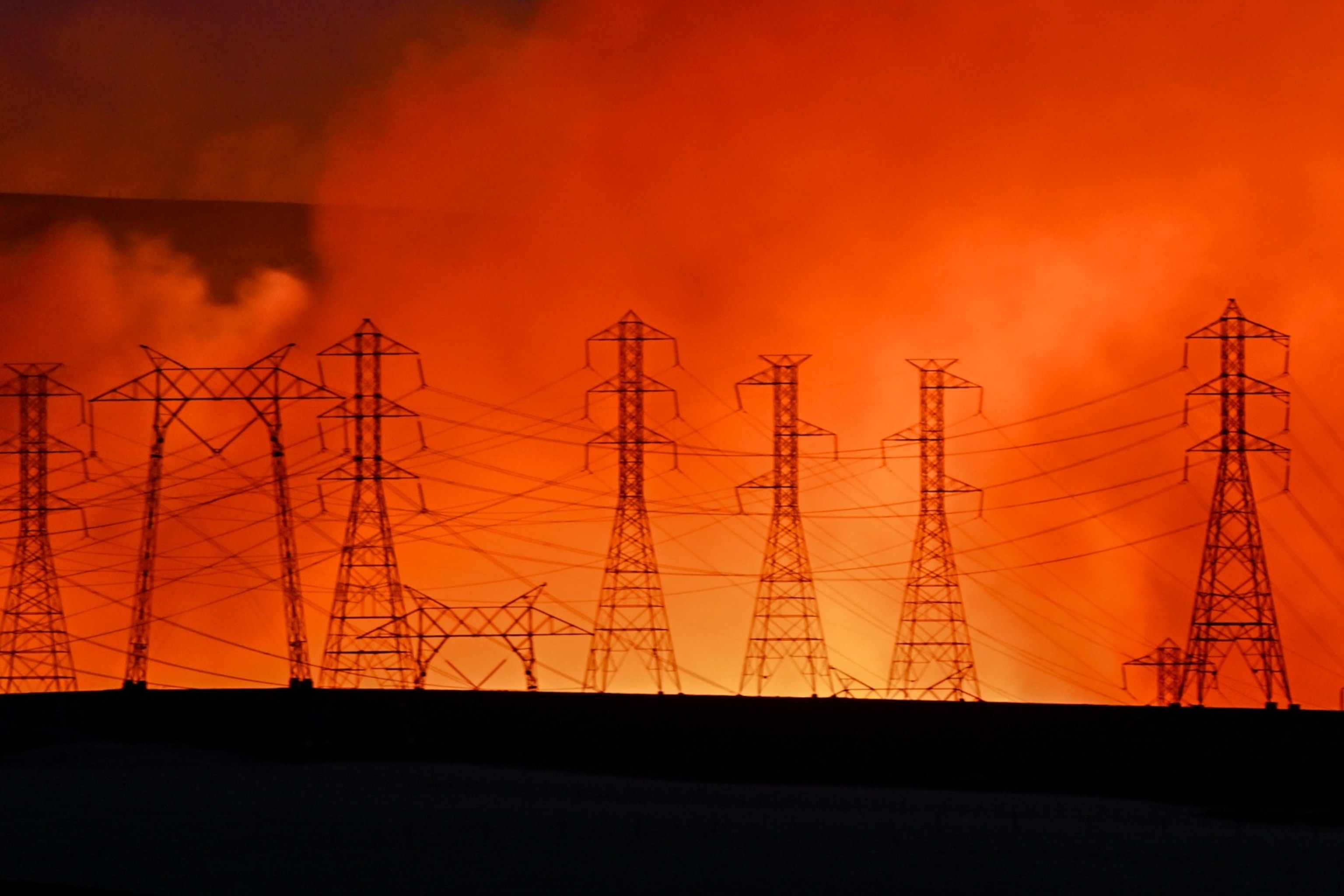
In this June 2, 2024, file photo, transmission towers are in flames as the Corral Fire continuse in San Joaquin County, Calif.
Anadolu via Getty Images, FILE
Utility companies need to maintain existing systems, many of which are at least 50 years old, Cohan said. Simple solutions such as replacing decades-old wooden poles and other equipment or ensuring nearby vegetation remains trimmed. But the fixes need to be made regularly, Jacobs said.
Other methods to upgrade or optimize power lines, such as burying them underground, are often either not feasible or too expensive.
“It’s not going to be possible to invest in burying lines everywhere,” Cohan said. “But we might want to look at places especially vulnerable to wildfires, especially vulnerable to hurricanes, where these investments might make sense.”
Some of the responsibility falls onto homeowners to weatherize their homes, including taking action such as sealing leaky walls and windows and installing insulation, Zhang said. This will allow homes to maintain comfortable temperatures for hours after the power fails, according to the experts.
“Insulation and weather stripping help you make it through hot weather,” Jacobs said. “It helps you make it through cold weather.”
But mitigating climate change by heavily increasing the use of renewable energy will ultimately be the deciding factor on whether the frequency of extreme events continues to rise, Zhang said.
“We have to reduce greenhouse gas emissions,” he said.
Extreme weather events such as hurricanes, tornadoes, and blizzards can have a significant impact on power grids and the customers who rely on them. These events can cause widespread power outages, leaving millions of people without electricity for days or even weeks. In this article, we will explore the various ways in which extreme weather can affect power grids and customers, as well as the steps that can be taken to mitigate these impacts.
One of the most obvious ways in which extreme weather can impact power grids is through physical damage to infrastructure. High winds from hurricanes or tornadoes can knock down power lines and poles, while heavy snow and ice can cause them to collapse under the weight. In addition, flooding from storms can damage substations and other critical components of the grid. When this happens, it can take days or even weeks to repair the damage and restore power to affected areas.
Extreme weather can also lead to an increase in demand for electricity, as people rely on heating or cooling systems to stay comfortable during heatwaves or cold snaps. This increased demand can put a strain on the grid, leading to brownouts or blackouts as the system struggles to keep up. In some cases, utilities may need to implement rolling blackouts to prevent the grid from becoming overloaded.
In addition to physical damage and increased demand, extreme weather can also impact power grids through disruptions to fuel supplies. For example, hurricanes can disrupt oil and gas production in the Gulf of Mexico, leading to shortages of fuel for power plants. Similarly, severe winter storms can disrupt coal deliveries to coal-fired power plants, leading to shortages of fuel. When this happens, power plants may be forced to shut down, leading to widespread power outages.
The impact of extreme weather on power grids is not limited to the physical infrastructure itself – it also affects the customers who rely on electricity for their daily lives. Power outages can disrupt businesses, schools, hospitals, and other critical services, leading to economic losses and potential health risks. In addition, vulnerable populations such as the elderly or those with medical conditions may be particularly at risk during power outages, as they rely on electricity for medical devices or air conditioning.
To mitigate the impact of extreme weather on power grids and customers, utilities and policymakers can take a number of steps. One key strategy is to invest in grid modernization and resilience measures, such as upgrading aging infrastructure, installing smart grid technologies, and improving storm preparedness and response plans. By making the grid more resilient to extreme weather events, utilities can reduce the likelihood and severity of power outages.
In addition, utilities can work with customers to increase energy efficiency and reduce demand during peak times. This can help to alleviate strain on the grid during extreme weather events and reduce the likelihood of blackouts. Customers can also take steps to prepare for power outages, such as stocking up on emergency supplies and having a backup power source such as a generator.
Overall, the impact of extreme weather on power grids and customers is a complex and multifaceted issue that requires a coordinated response from utilities, policymakers, and customers alike. By investing in grid modernization, improving storm preparedness, and promoting energy efficiency, we can help to minimize the impact of extreme weather events on our power grids and ensure a more reliable and resilient electricity system for all.
